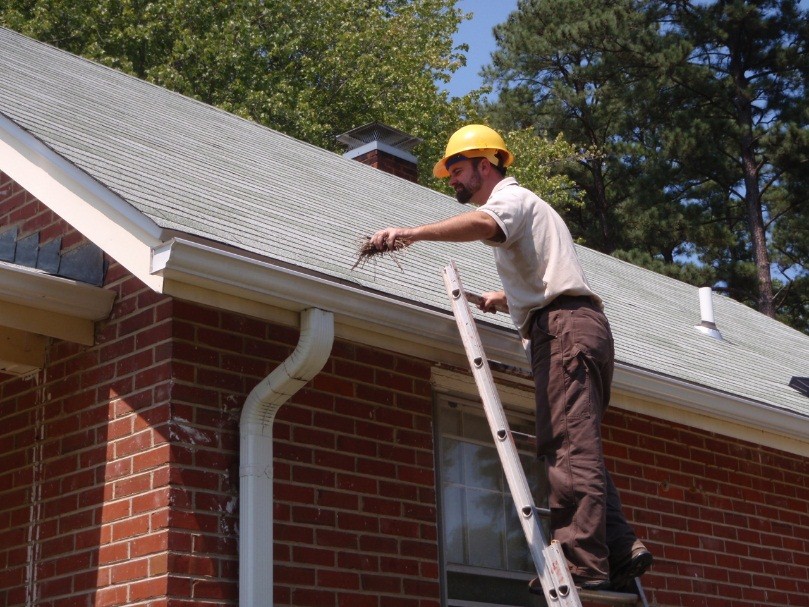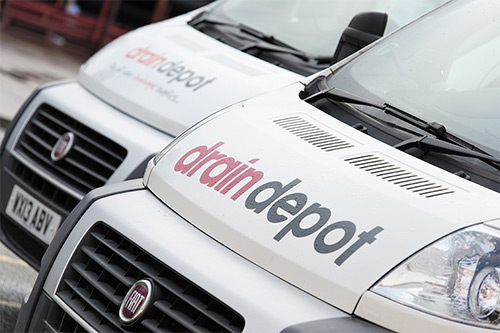In case you missed it see what’s in this section
Let's Talk

Drain Depot: Unblocking Gutters and Downpipes
Tree leaves and other residues can get deposited in the gutter and prevent the efficient flow of rainwater. Regularly maintaining your gutters & downpipes gives them a longer life and reduces the risk of rainwater blockage. If you leave your gutters & downpipes blocked then it could end up causing some severe damage in the long run. If the water is not removed, it could break the gutter and even weaken the house, the façade and the foundations.
Unblocking a gutter: Tools
To unblock a gutter safely you will need gloves, a ladder, a bucket, a trowel and a water jet. You can also find gutter cleaning kits consisting of specific tools for the job.
There are also some alternative tools you could use that will do the job including:
- Cylindrical brushes that scrape the inside of the pipes
- A pair of pliers with a handle that can be attached to a telescopic wand
- Gutter cleaner, brushes and scrapers that can be attached to a handle and used from the ground.
How to unblock your guttering?
1) Remove the leaves from the gutter
Stand the ladder up against the brickwork making sure it is safe and steady.
Clear the gutter of the residue using the trowel to unstick the leaves or mud and then place them into bucket.
2) Unblocking the downpipe
Unblocking the downpipe is without any doubt the hardest part of the cleaning. You can try to run pressure water through the pipe but this can potentially aggravate the blockage. When using the pressure hose ensure you unravel the hose allowing you enough room for movement and reach.
The easiest way to clean your drains can be to dismantle the downpipe and clean it by hand. Take off the bends which is where the blockages usually take place and clean them with your tools.
Another solution would be to use a plumber’s snake which is essentially an endless screw with a flexible tube allowing you to drill through the blockage. Be sure to buy one in the size that is applicable for your gutter.
After the cleaning: Assess
It is advised to take advantage of the cleaning to check the general state of the gutter because this might have allowed you to notice some problems such as:
- A leaky or cracked gutter
- A broken fascia bracket
- A faulty connecting joint
You will then need to tighten the screws or complete repairs in case of cracks, holes or lack of stability. If these repairs are too complicated it may be an idea to get in a professional.
Small repair of the gutter
If you notice a leak in your gutter, start by identifying its cause. A leak at a join can simply come from a gap in the drain; you will just need to fix it together again however, if the join is faulty, the process can become more complicated. You will then have to purchase a new connecting union and re attach the two lengths of gutter. In order for the process to work you must remember to clean all the different elements of the gutter first.
If your gutter has a hole in then the repair will be much more delicate. It all depends on the size of the hole. It is possible to find some hard-wearing patches in stores allowing you to seal the hole or the crack. Another possibility is to use a filler to fill in the crack or hole but if the hole is too big you will have to put a glass fibreglass framework with two layers of filler.
These solutions are only temporary and you will have to replace the damaged piece as soon as possible.
How to prevent the blocking of gutter and downpipes
If you have many trees in your garden, it can be profitable to put a system in to prevent the leaves from accumulating in your gutter. To avoid the gutter from getting blocked too often, you can use a grating or brush leaf guard to ensure leaves don’t block the channel. This will stop leaves from entering the downpipe and causing more complicated blockages.
Gutter cleaning: don’t forget safety!
Your safety is paramount when it comes to any DIY job so here are some things to think about when carrying out any work:
- Scaffolding
- Scaffolding can ensure you more security and safety than a ladder however it is difficult to move and more expensive.
- Ladder
Ensure that it is at a reasonable distance from the wall in order to be stable (a 75 Degree angle is advised). You can also buy an extension to put at the top of the ladder that will allow you enough distance to work comfortably. Also be sure that your ladder has non-skid legs.
You can buy accessories such as:
- A tool rack and a hook to hang up the bucket to help you keep the tools close to you
- A stabilizer leg to ensure the stability of your ladder on an uneven or hilly field.
Safety harness
If you are working at more than 6 meters above the ground, this precaution is compulsory. You will need to anchor it in the wall or at the bottom of the roof with safety hooks. You must make sure you have at least two people when working so that someone can firmly hold the ladder while you are on top of it.
Weather in Swindon
Listings





















